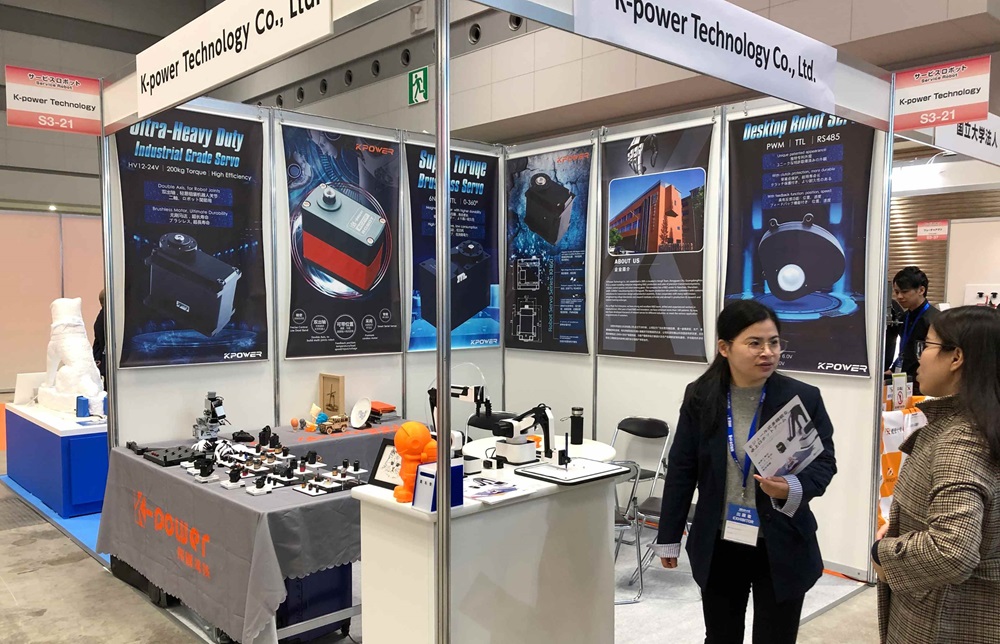Unleashing the Power of the 20kg Servo Motor: A Deep Dive into Precision Engineering
In the rapidly advancing world of automation and robotics, servo motors have become the heartbeat of countless machines and systems. Among the diverse range of these powerful actuators, the 20kg servo motor stands out as a formidable force—combining substantial torque with precision control. Whether you're crafting a robot, building an automated manufacturing line, or venturing into drone technology, understanding what makes a 20kg servo motor so vital is essential.

The Fundamentals of Servo Motors
Before diving into the specifics, it’s helpful to clarify what a servo motor is. Unlike standard motors, servo motors are designed for high accuracy and precise control of angular or linear position, velocity, and acceleration. They are paired with a feedback mechanism—usually encoders or resolvers—that constantly monitors the motor’s position and helps correct any deviations, ensuring consistent operation.
Why 20kg of Torque?
The "20kg" refers to the approximate holding torque, which can be translated into roughly 196 Newton-meters (Nm) when considering gravitational forces and typical gear ratios. This power level makes the servo suitable for demanding applications requiring substantial force output, such as lifting heavy objects, driving large robotic arms, or moving substantial loads in industrial environments.
Key Features of a 20kg Servo Motor
A typical 20kg servo motor encompasses several features that maximize performance:
High Torque Output: Enables handling heavy loads with minimal lag or positional error. Robust Construction: Usually built with durable materials to withstand industrial vibrations, shocks, and temperature variations. Advanced Feedback Systems: High-resolution encoders or resolvers for fine control and smooth operation. Programmability: Capable of integrating with control systems for complex tasks.
The Balance Between Power and Precision
One of the alluring aspects of a 20kg servo motor is its ability to deliver both power and finesse. In many industrial applications, the need to move large or heavy objects must be balanced against the necessity for precise positioning—be it in robotic arms performing delicate assembly tasks or in CNC machines shaping intricate components.
The motor’s design incorporates high-torque capabilities while maintaining the responsiveness required for fine detail work. This dual nature has made it a favorite across multiple sectors, from aerospace components to hobbyist robotics.
Exploring the Core Applications
The range of applications for these high-torque servo motors is expansive. Here are some of the most common:
Robotic Arms and Manipulators: Supporting heavy loads with precise control, enabling complex movements in manufacturing or research. Automated Guided Vehicles (AGVs): Powering motion with high torque and reliability. Industrial Automation: Driving large conveyor systems, presses, or sorting machines. Aerospace and Defense: Facilitating precise movement in aircraft control surfaces or military equipment. Agricultural Machinery: Powering large, heavy-duty equipment with accuracy.
The Engineering Behind a 20kg Servo Motor
Designing these motors involves careful engineering considerations. Factors such as winding configurations, gear reduction ratios, thermal management, and electronic control circuitry all play vital roles in optimizing performance. For instance, increasing torque capacity often involves larger stator windings and stronger magnetic materials, which in turn affects size and cooling requirements.
Moreover, the integration of digital control systems enables precise feedback, allowing for adaptive algorithms that refine movement commands in real time. This synergy of hardware and software innovation ensures that the 20kg servo motor functions seamlessly in demanding environments.
Choosing the Right Servo Motor for Your Needs
When considering a 20kg servo motor, it’s essential to match its specifications to your application requirements. Key parameters include:
Torque Ratings: Make sure it exceeds the maximum load you anticipate. Speed Capabilities: Determine if the motor’s rotation speed aligns with your operational needs. Voltage and Current Ratings: Ensure compatibility with your power supply and control system. Size and Mounting Options: Confirm that the physical dimensions fit within your design constraints. Control Resolution: For applications requiring fine positioning, select motors with high-resolution feedback devices.
Choosing a high-quality servo motor isn’t just about raw power; it’s about the harmony between strength, precision, durability, and compatibility.
Leveraging innovations in modular drive technology, Kpower integrates high-performance motors, precision reducers, and multi-protocol control systems to provide efficient and customized smart drive system solutions.




































